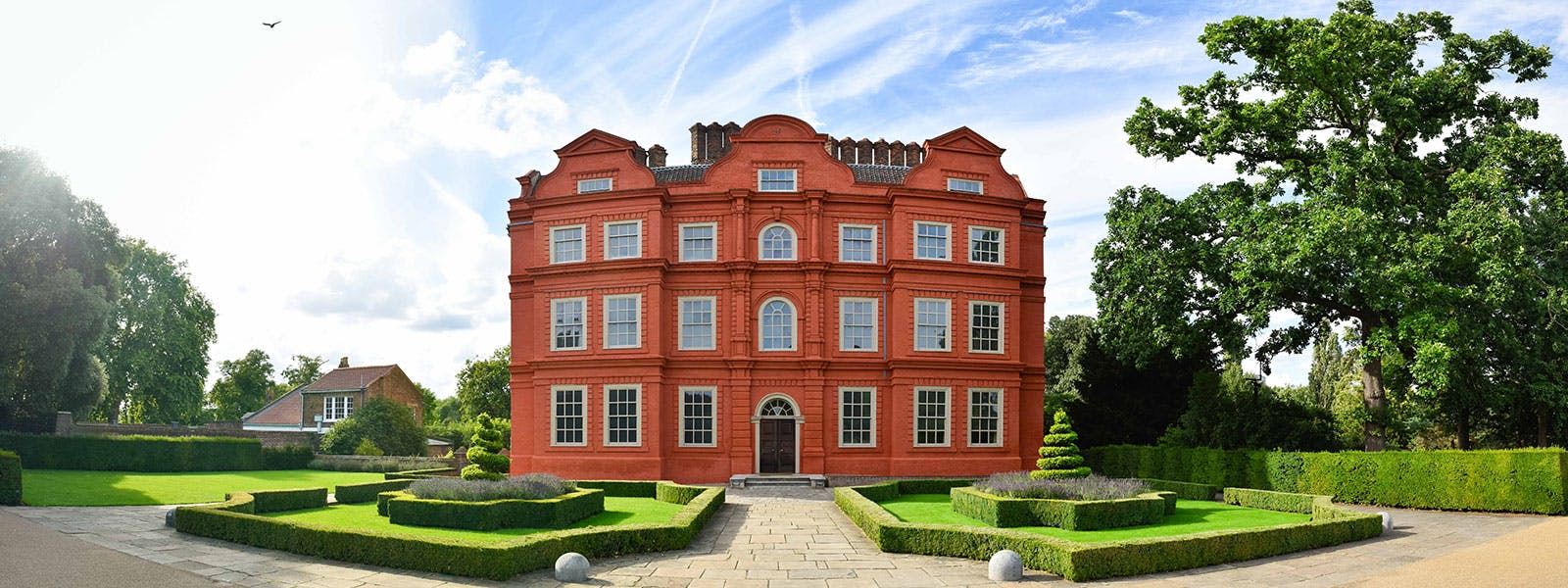
George III’s private retreat
Kew Palace is the smallest of all the royal palaces. It was originally built as a fashionable mansion for wealthy London silk merchant, Samuel Fortrey in 1631.
George II (r 1727-60) and Queen Caroline were first attracted to little Kew, thinking it a perfect lodging for their three eldest daughters. After them, several generations of Georgian royalty used Kew and nearby Richmond Lodge as weekend retreats from an intensely public life in town.
Kew reflects the intimate personal and domestic life of Georgian kings and queens for much of the 18th century. Today the interior of this tiny, atmospheric palace tells the powerful story of George III, his mental illness and the members of his family who lived and died there.
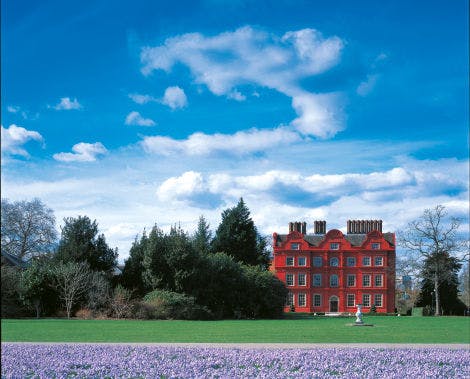
Intimate royal retreat
In the 1720s, the royal family, George II and Queen Caroline and their children arrived and took leases on the palace and several other houses in the near vicinity.
It was a place where they could be private, domestic, and live normal lives unencumbered by the trappings of ceremony and deference. The gardens were cultivated as an idyllic pleasure ground.
Later the house became a refuge for George III, when he fell ill and was thought to have become mad.
Even today, Kew’s scale and intimacy reflects a more humble and human picture of the British monarchy.
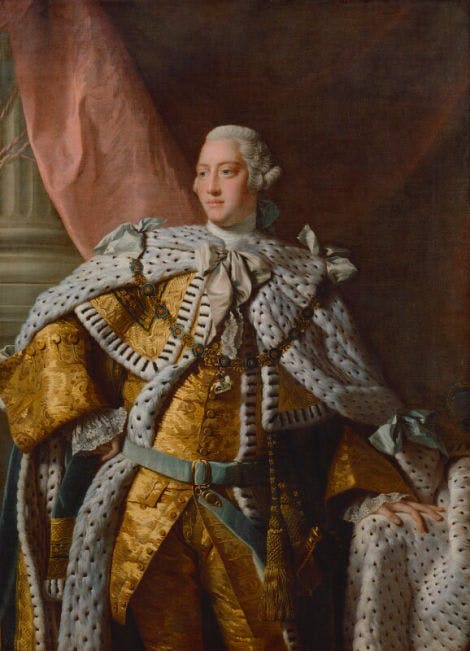
The tragic illness of the King
However, once a place for summer relaxation and family life, Kew fell under the shadow of George III’s mental illness. The King was incarcerated there during his first bout of ‘madness’ in 1788.
Away from the public gaze, in the peace and seclusion of Kew, an increasingly desperate band of doctors tried to cure him.
The King survived being administered powerful emetics and laxatives, freezing baths and leeching. He was also put into a strait-jacket if he refused to co-operate.
He recovered by 1789, but suffered recurrences in 1801 and 1804, before suffering a severe decline in 1810. A regency was declared in 1811.
Image: George III in happier times, © The National Portrait Gallery, London.
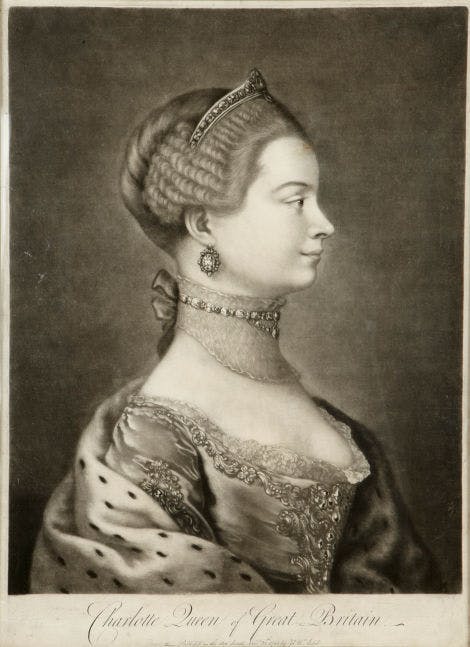
A royal death
From 1809 the royal family rarely visited Kew, but early in 1818, Queen Charlotte was taken ill on a journey from London to Windsor.
She stayed at Kew Palace for what was thought to be a few days, but her health never improved.
After a long illness, she died in her bedroom in November of that year.
Final farewell
The last enduring memory for the people of Kew was the slow procession of her coffin from the palace, taking her back to Windsor for burial.
The cobbled courtyard of Windsor Castle were muffled with straw, so that the King, although by now severely demented, would not be aware of the funeral carriage bringing back his beloved wife.
Did you know?
The entire village turned out to pay its respects as the queen left her beloved Kew for the last time.
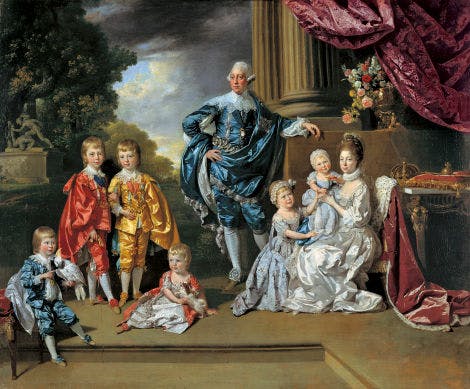
No heir apparent
King George III and Queen Charlotte had 15 children during their long marriage.
By 1817 however, only one legitimate grandchild had been born, and that royal heir, Princess Charlotte died tragically giving birth to a stillborn son.
Marriage of George and Charlotte's remaining sons, and the production of an heir to the throne now became more pressing than ever.
The baby race
As a succession crisis loomed, two of the royal sons, now in middle age, had to find appropriate royal wives. They looked to Germany for inspiration.
The princesses Adelaide of Saxe-Meiningen and Victoire of Saxe-Coburg were eminently suitable choices. A race was now on between the couples to produce an heir to the throne.
Kew was the setting for a double wedding ceremony on 11 July 1818, as the Dukes married their duchesses in a service in the presence of the ailing Queen Charlotte.
Did you know?
William (later William IV) had ten illegitimate children by his long-term mistress, actress Dorothea Jordan, whom he abandoned to marry Princess Adelaide.

A throne saved
Edward, Duke of Kent and and his Duchess Victoire won the ‘baby race’ by producing a daughter, born just nine months after the wedding.
This baby was destined for greatness: christened Alexandrina Victoria this little girl would grow up to become Queen Victoria.
Victoria’s great-great-grandaughter, Queen Elizabeth II, celebrated her 80th birthday in 2006 with a family dinner party at Kew.
Image: Victoire, Duchess of Kent with Princess Victoria (after Beechey) c1824. The infant Victoria holds a miniature portrait of her late father. Royal Collection Trust/© Her Majesty Queen Elizabeth II 2017.
Listen to the podcast
In this episode, we continue our mini-series on treasured spaces with a modest cottage hidden away in Kew Gardens. We’ll take a walk with Curator Lee Prosser through this intimate and charming space, to learn how it was used as a retreat away from public life for Queen Charlotte, George III and the royal family.
More episodesBROWSE MORE HISTORY AND STORIES

George III
Dutiful, intelligent and cultured, but cruelly labelled ‘mad’

The royal kitchens at Kew
The kitchens have survived, practically untouched
EXPLORE WHAT'S ON

- Events
Quiet Session
Join us for a quiet session in Kew Palace, a calmer experience for those living with or caring for someone with Autism or those who have any other sensory needs, and their families and carers.
- 29 June, 17 July, 21 August and 22 September
- 1 hour
- Kew Palace
- Included in Kew Gardens admission

- Tours and talks
Queen Charlotte: A Kew Palace Story Tour
Get to know Queen Charlotte more closely in the intimate setting of Kew Palace, in our brand-new tour.
- Daily
- 14:00 (tours last 30 minutes)
- Kew Palace
- Separate ticket

- Tours and talks
Hidden Spaces Tours
See areas of Kew Palace not normally open to the public, such as our attics complete with 17th century witches marks, and our Tudor undercroft on our new tours.
- Open
- 16:00 (tours last 30 minutes)
- Kew Palace
- Separate ticket
Shop online

Shop Kew Palace gifts
The most intimate of our six royal palaces, Kew was built as a private house in 1631 and used by the royal family between 1729 and 1818. These gifts and souvenirs are all inspired by Kew Palace.
From £4.00
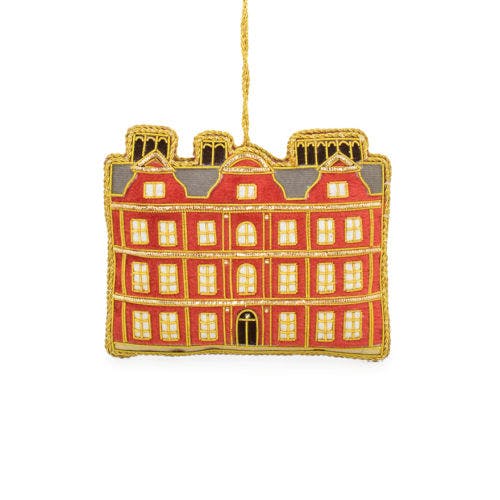
Kew Palace luxury hanging decoration
This luxury handmade Christmas tree decoration features the design of the front of the Dutch House at Kew Palace on the River Thames in south west London.
£29.99
